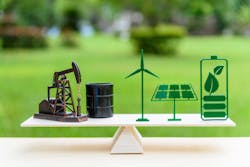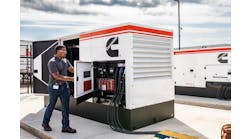Don’t forget the ‘steps’ when stepping into the future of decarbonized, decentralized energy
The momentum toward microgrids today is encouraging as the energy industry and end-users alike pursue a clean, decentralized energy system. Yet, it’s often amusing to the ears of industry veterans to hear those who just arrived to the party hail microgrids as a new breakthrough.
Microgrids are old school infrastructure work. For decades, paper mills, steel mills, university campuses, and many other large commercial and industrial settings have sought to deliver their own fossil-fueled onsite power and heat solutions, primarily to save on energy costs. These systems are no less microgrids than the new microgrid configurations emerging today.
What’s different is that the latest microgrids are tapping innovation in intermittent renewable, battery and other clean energy technologies to deliver a decarbonized energy future that business, government and society increasingly agree must be achieved.
But does a goal for a decarbonized energy future mean that we should move on from these “old school” microgrid solutions that may still use fossil fuels?
I’d argue the answer is a resounding one: Not yet!
Achieving net-zero carbon emissions doesn’t happen in one step
The concept of reaching zero-carbon energy use by electrifying everything and transitioning to zero-carbon generation is an appealing one on the surface. Until you get into the nitty, gritty details.
Heat, as many in the energy industry know, is the elephant in the room. Decarbonizing energy uses that require electricity is much easier than industrial processes that require high-quality heat, such as making plastics, fuels and more.
There are a significant number of universities and industrial facilities today still using coal or coke products. These systems tie to infrastructure embedded deeply within their campuses and plants. Totally replacing that infrastructure falls anywhere between cost prohibitive and impossible. What is possible—and smart business to save cost and reduce carbon—is to upgrade those systems to high-efficiency gas cogeneration systems, which produce electricity, heating and cooling for buildings and high quality steam for industrial processes.
That step alone can cut costs and carbon, but it also prepares the energy user for the next step to a zero-carbon future. These gas cogen systems are ready to use no- or lower-carbon fuels such as green hydrogen and renewable natural gas when they emerge as viable fuel alternatives.
‘Old school’ microgrids in action today
There are countless projects operating in the field today saving costs and carbon emissions using gas-fueled cogeneration, replacing steam heating systems with more efficient hot water heating systems, and storing thermal energy. Here are just a few that showcase the breadth of applications:
- Hudson Yards: At a cost of $20 billion to develop, Hudson Yards in Manhattan is the largest real-estate development in the United States. The developers wanted the project to operate on a microgrid that could completely serve its power needs, even if there was a complete blackout of the Manhattan electric grid. They developed a 13.5 MW microgrid, powered primarily by gas-fired generators with highly efficient chilled and hot water systems built on the back end. Together, the system serves electricity, heating and cooling to the development. The process was by no means easy, but Con Edison came to the table willing to innovate and deployed its first pure microgrid breakers to allow the Hudson Yards microgrid to disconnect and reconnect from island mode to the main grid.
- DuPont Spruance manufacturing facility: DuPont’s Spruance manufacturing facility in Richmond, Virginia, was still burning coal to produce steam and electricity at the site until very recently. The company partnered with Veolia North America seeking energy cost savings, and discovered it could save significant costs and carbon emissions by converting the Spruance power generation system from coal to gas cogeneration. Fully converted in 2021, the system optimizes energy yields and achieves a 50% reduction in carbon emissions—220,000 tons annually, to be exact.
- Major university in the Northeast U.S.: A 100-year-old gas and oil-fired plant provides steam for heating to a major university in the Northeast. The university had hoped to move to a “100% green” solution, but discovered the cost was prohibitive because of how deeply the infrastructure is embedded in the heart of its campus. The Veolia North America team and its partners developed a plan to convert the old gas-fired boilers to a gas cogeneration plant, which is ready to be fueled by renewable gas, green hydrogen or other low-carbon fuels when available. The team is also helping the university transition its steam heat system to a hot and chilled water system which will increase efficiency and be ready for the next generation of energy transition such as a geo exchange.
All of these systems represent steps toward the decentralized, decarbonized energy future. They are a large step to lower emissions now and a step that allows future steps to net zero.
Equally or even more important to the customers, all of these systems save energy costs.
Best of all, there is no either-or decision between these “old school” microgrids and the emerging class of carbon-free, renewable plus battery storage microgrids. They all work together, within the same microgrids or in separate applications, to more quickly achieve the clean and affordable energy future we all seek.
Mike Byrnes is senior vice president of Veolia North America.







